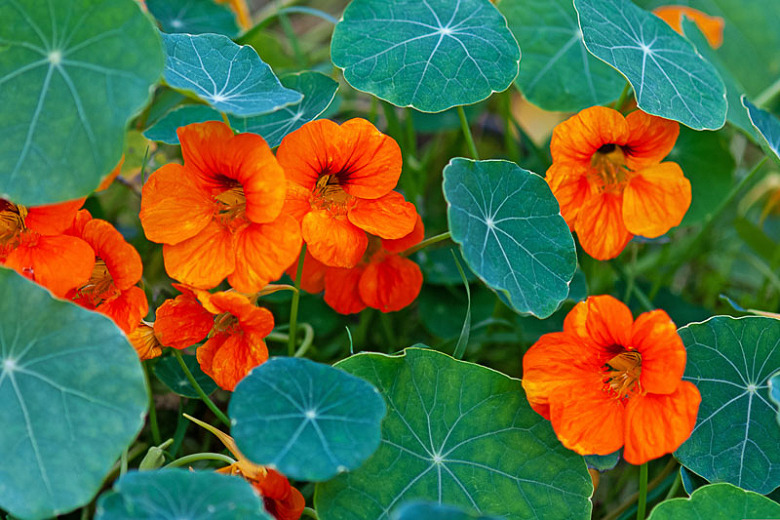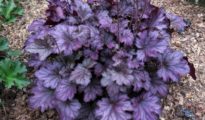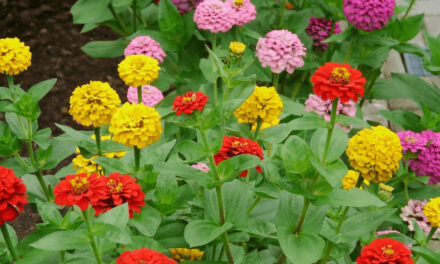Nasturtiums are popular flowering plants that are widely grown for their attractive, colorful flowers and foliage. These hardy plants are easy to grow, and they can be grown in containers or in the ground. Nasturtiums are known for their bright, cheerful flowers that range from yellow to red. They are also great plants for attracting beneficial insects to your garden. In this blog post, we will explore the various aspects of growing Nasturtiums, including soil preparation, planting, watering, fertilizing, pest and disease control, and harvesting.

How to Grow Nasturtiums
Soil Preparation
Before planting Nasturtiums, it is important to prepare the soil properly. Nasturtiums prefer a well-draining soil that is rich in organic matter. If you are growing Nasturtiums in containers, make sure the container has adequate drainage holes to allow excess water to drain out. If you are growing Nasturtiums in the ground, work the soil to a depth of at least 6 inches, and add organic matter such as compost, well-rotted manure, or leaf mold to the soil. This will help to improve soil structure and fertility, and it will also help to retain moisture in the soil.
Planting
Nasturtiums can be planted from seeds or from seedlings. If you are planting from seeds, sow them directly in the soil after the last frost date. Nasturtium seeds can be sown about 1 inch deep and 6 inches apart. If you are planting from seedlings, plant them at the same depth as they were in their containers, and space them about 12 inches apart. Nasturtiums prefer full sun, but they can also grow in partial shade. When planting Nasturtiums, make sure to water them well after planting.
Watering
Nasturtiums prefer evenly moist soil, but they can tolerate periods of drought. When watering Nasturtiums, it is important to water deeply and infrequently. This will encourage the roots to grow deeper into the soil and will help to prevent shallow root growth. Water Nasturtiums when the soil is dry to the touch. Avoid overhead watering, as this can cause the leaves to become wet, which can lead to the development of fungal diseases. Instead, water at the base of the plant.
Fertilizing
Nasturtiums do not require a lot of fertilizer, but they will benefit from a light application of fertilizer once a month during the growing season. Use a balanced fertilizer, such as a 10-10-10 fertilizer, and follow the package instructions for application rates. Avoid over-fertilizing Nasturtiums, as this can lead to excessive foliage growth at the expense of flowers.
Pest and Disease Control
Nasturtiums are relatively pest and disease-free, but they can be affected by aphids, caterpillars, and fungal diseases such as powdery mildew. To control aphids and caterpillars, use an insecticidal soap or a horticultural oil. These products are effective against many common garden pests and are safe to use on Nasturtiums. To control powdery mildew, make sure to plant Nasturtiums in a location with good air circulation and avoid overhead watering. If powdery mildew does develop, remove affected leaves and use a fungicide labeled for powdery mildew.
Harvesting
Nasturtiums are not only beautiful, but they are also edible. The leaves, flowers, and seeds of Nasturtiums are all edible and can be used in a variety of culinary applications. Nasturtium leaves have a peppery flavor and can be used in salads, sandwiches, and as a garnish. The flowers can be used as a colorful addition to salads, and they can also be stuffed with cheese or other fillings. Nasturtium seeds can be pickled and used as a substitute for capers.
When harvesting Nasturtiums, it is important to harvest the flowers and leaves regularly to promote new growth and prevent the plant from becoming too leggy. Simply pinch off the flowers and leaves as needed, taking care not to damage the stem or any developing buds.
Growing Nasturtiums in Containers
Nasturtiums are well-suited for container gardening and can be grown in pots, hanging baskets, and window boxes. When growing Nasturtiums in containers, choose a container that is at least 8 inches deep and has adequate drainage holes. Fill the container with a well-draining potting mix, and plant the Nasturtiums at the same depth as they were in their nursery pots. Water the container regularly, making sure to water deeply and infrequently, and fertilize with a balanced fertilizer once a month during the growing season.
Growing Nasturtiums as Companion Plants
Nasturtiums are excellent companion plants for many vegetables, including tomatoes, cucumbers, and beans. Nasturtiums repel aphids, whiteflies, and cucumber beetles, making them a great addition to any vegetable garden. They also attract beneficial insects such as ladybugs, lacewings, and hoverflies, which feed on garden pests.
When planting Nasturtiums as companion plants, plant them around the perimeter of the garden bed or in between rows of vegetables. This will create a barrier of flowers and foliage that will help to deter pests and attract beneficial insects.
Nasturtiums are easy to grow, versatile plants that are a great addition to any garden. Whether you are growing them for their attractive flowers, edible leaves and flowers, or as companion plants, Nasturtiums are sure to add color and interest to your garden. By following the tips outlined in this blog post, you can grow beautiful, healthy Nasturtiums that will provide enjoyment throughout the growing season.



















